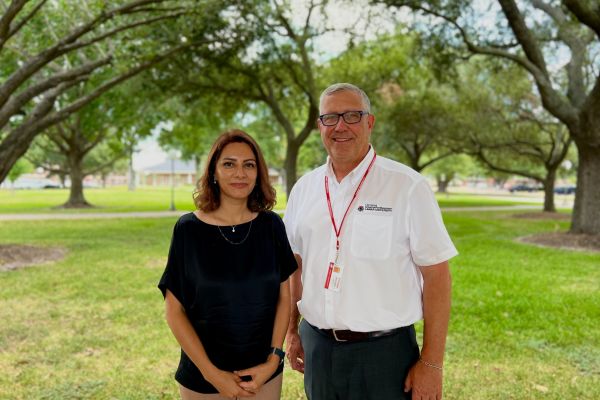College of Engineering's Dr. Hamidi Awarded $173,636 Texas DOT Grant
In a significant stride toward enhancing maritime transportation, Lamar University professor Dr. Maryam Hamidi has been granted $173,636 in research funding by the Texas Department of Transportation, or TxDOT, for a research study titled “Gulf Intracoastal Waterway – Automatic Identification System (AIS) Application.” The primary goal of this project is to evaluate and analyze the movement of ship and barge traffic along the Texas Gulf Intracoastal Waterway and within Texas gulf coast ports using AIS data. 
“This study aims at improving the efficacy and efficiency of ship and barge transit along the Texas Gulf Intracoastal Waterway,” said Center for Advances in Port Management Director Robert Dubois. “Prior research that analyzed shipping congestion and the movement of vessels within the Port of Houston made TxDOT aware and interested in this research and the broader scope of maritime transportation.”
Dr. Hamidi's innovative work in transportation engineering has earned Lamar University this grant, which signals a substantial step forward for maritime logistics in the gulf coast region. “By attending the Houston Pilot meetings, I noticed one of the biggest challenges of waterway operation is vessel delays,” Hamidi said. “Vessels can spend hours of their port time waiting for services. This can increase fuel consumption, emissions, and risk of collision. AIS data can be used to investigate the transit behavior of vessels, such as travel time, speed, and origin-destination docks. This grant provides the opportunity to analyze such data set and share the results among stakeholders including terminal operators, tug companies, pilots, and VTS to increase efficiency.”
Hamidi’s efforts to enhance the efficiency and effectiveness of ship and barge transit along the Texas Gulf Intracoastal Waterway hold immense promise for revolutionizing maritime logistics.
“Through Lamar University’s Center for Advances in Port Management, my research team could develop an AIS tool that reports waiting time at sea buoy, service time at terminal, and travel time through the channel,” Hamidi said. “Quantifying such metrics is the first step to address delays and increase productivity.
By creating a more efficient, eco-friendly, and resilient transportation system, this research endeavor aligns with the broader goals of sustainable infrastructure development. As the project unfolds, it will leave a mark on both academic research and the practical world of maritime transportation.
To learn more about the Department of Industrial and Systems Engineering please visit https://www.lamar.edu/engineering/industrial/index.html.
